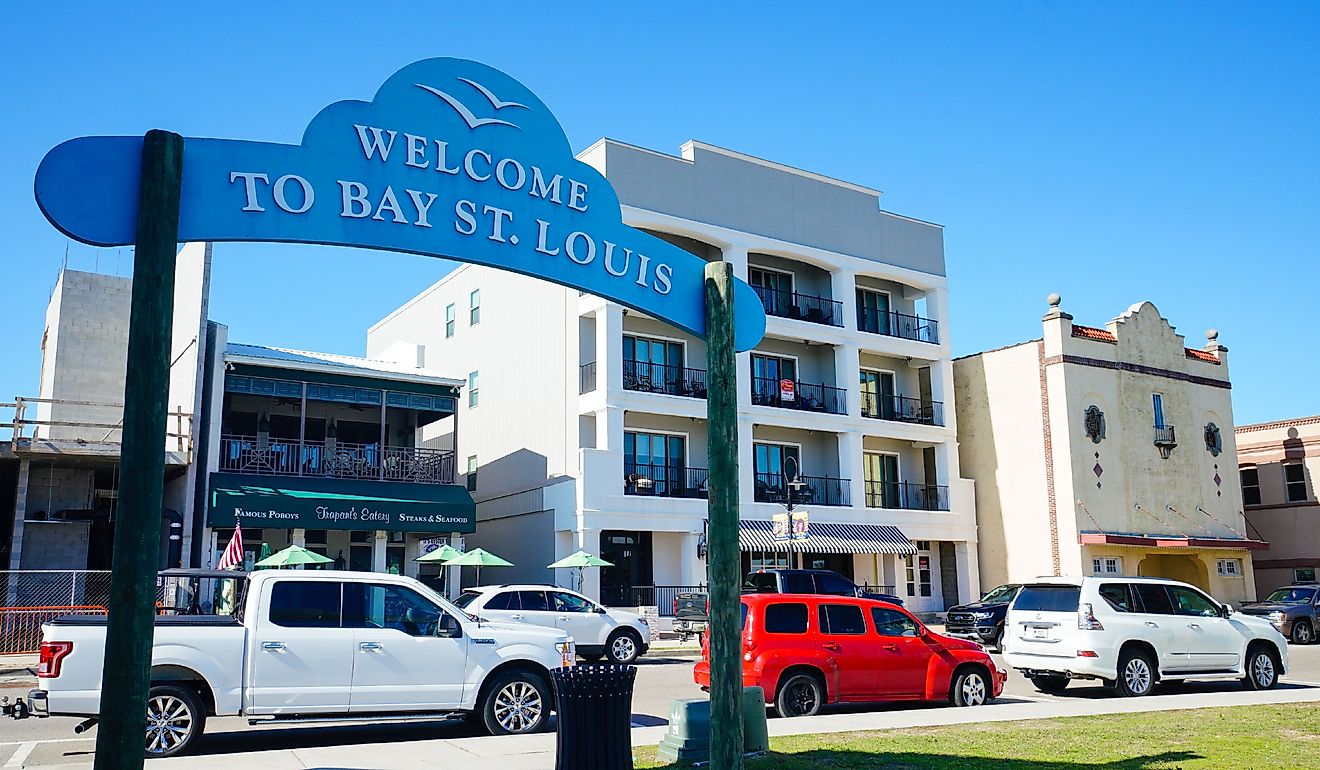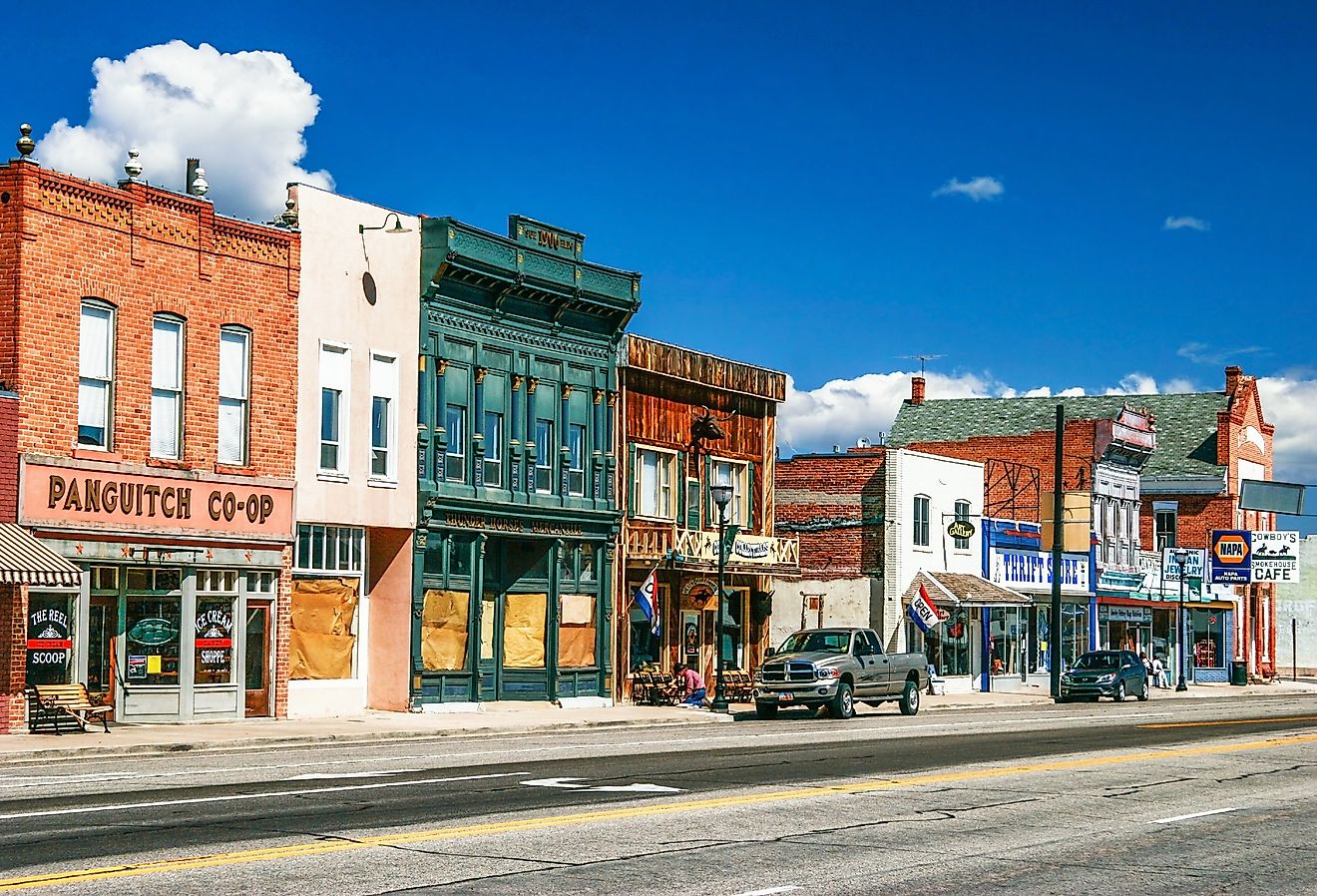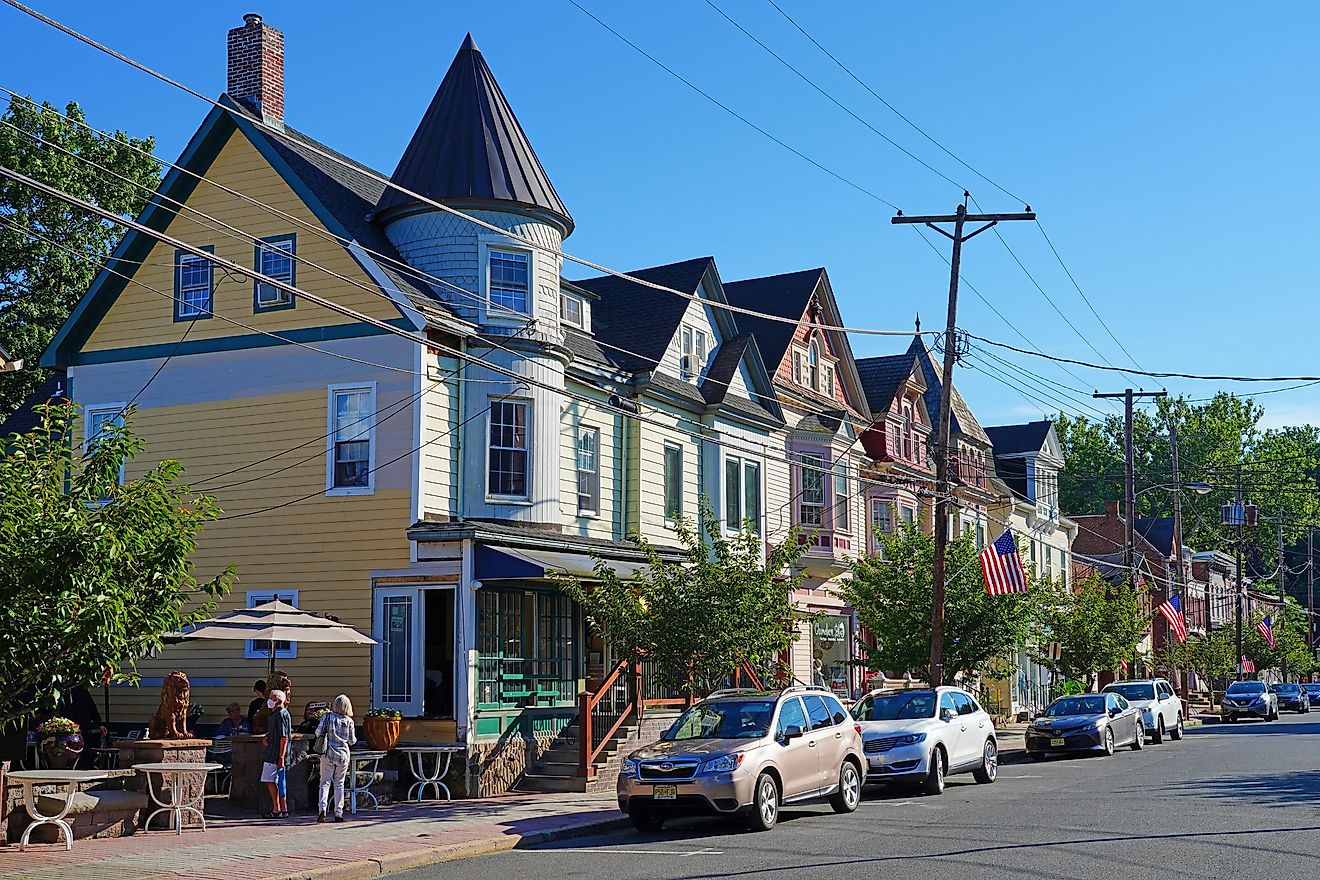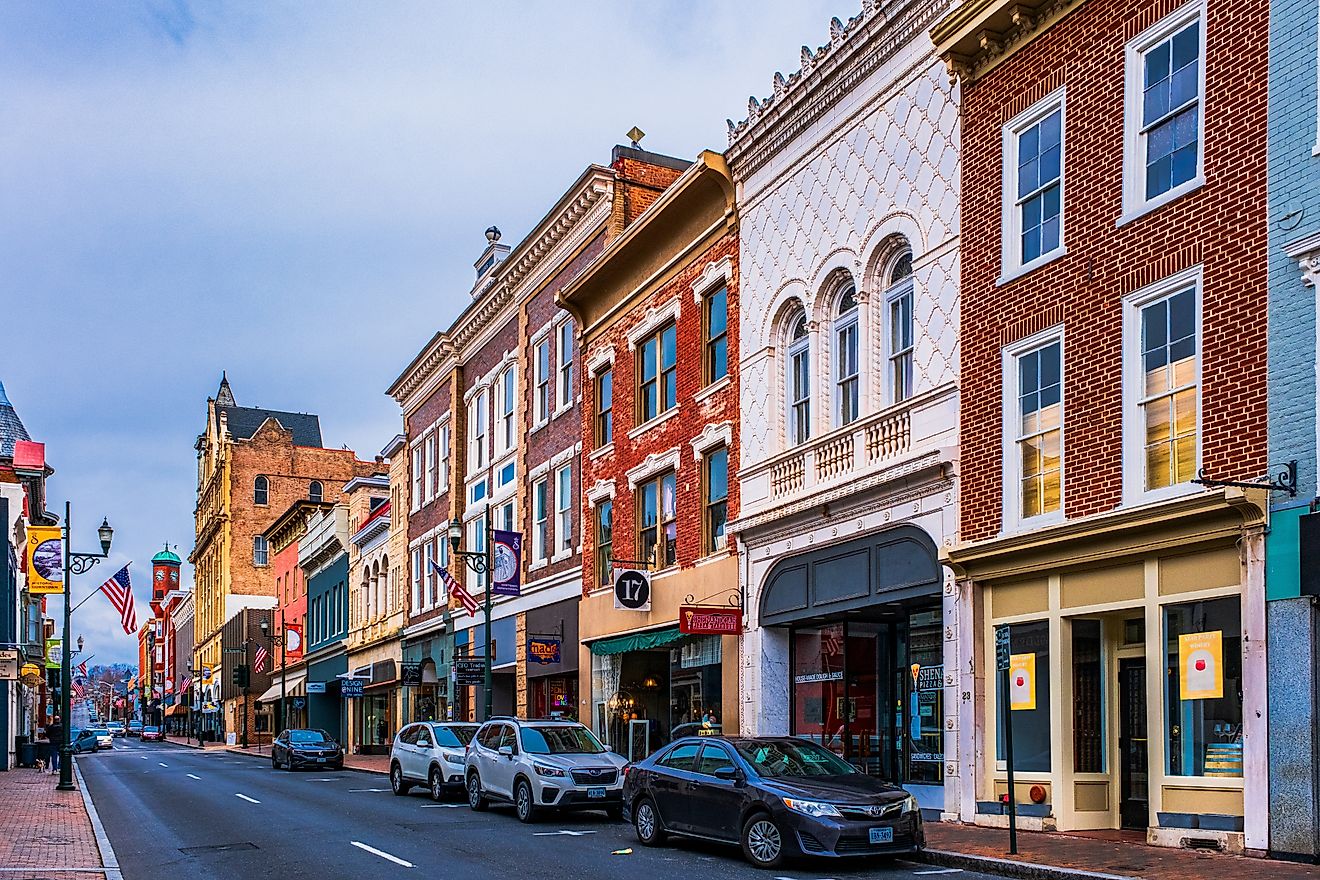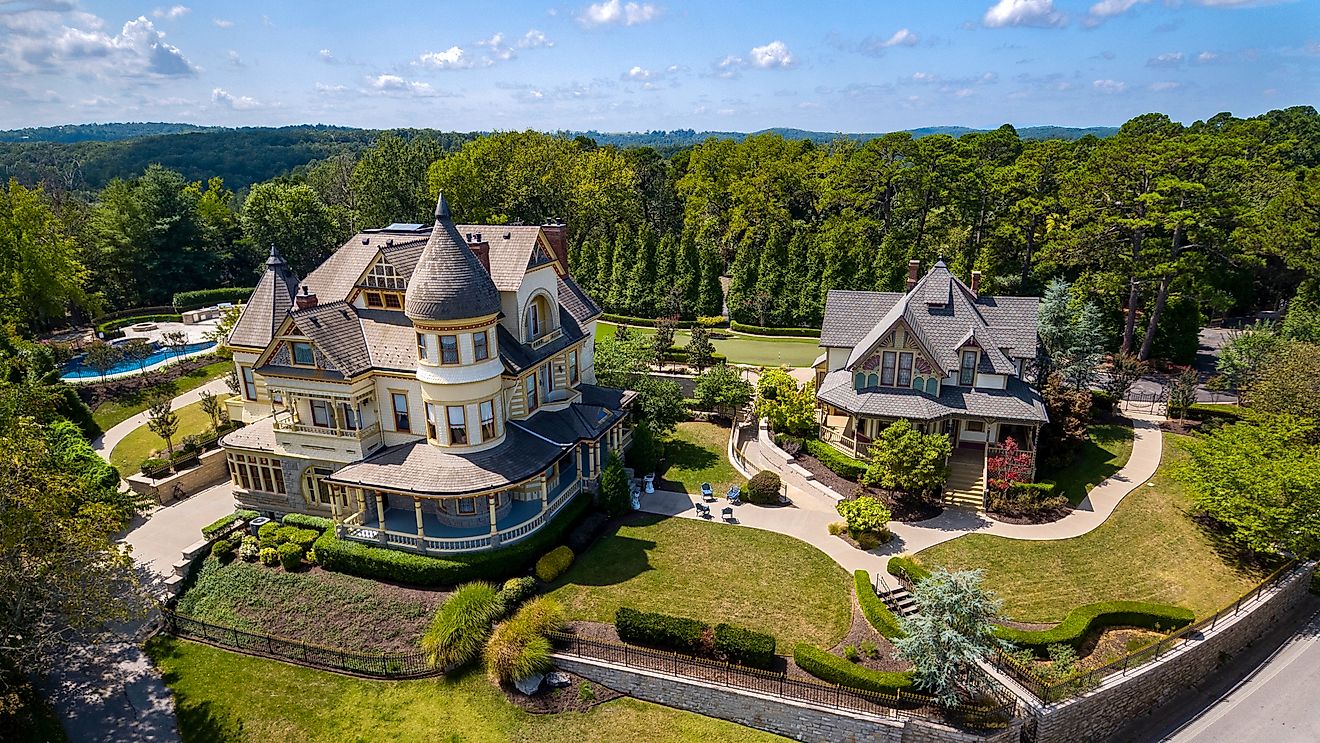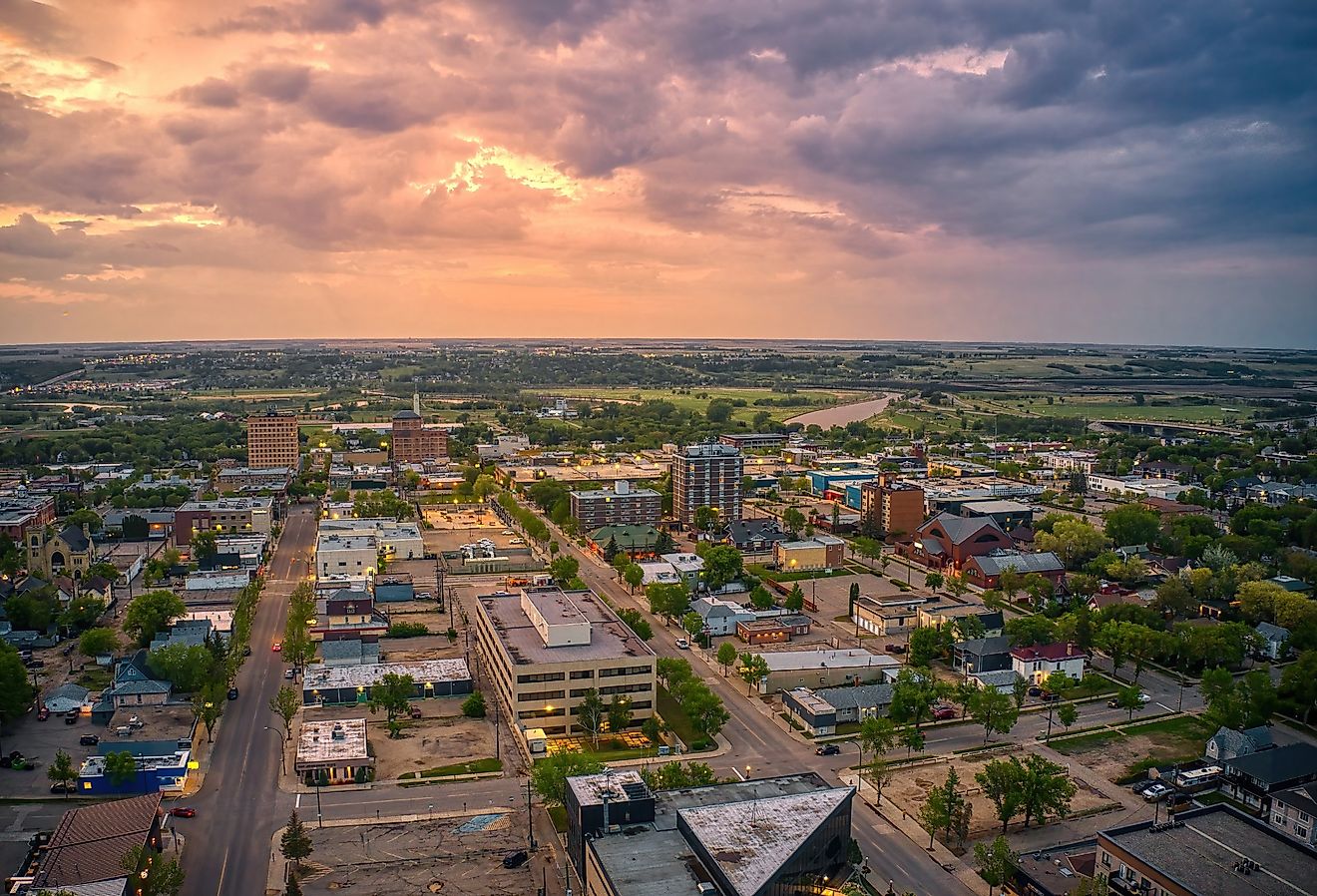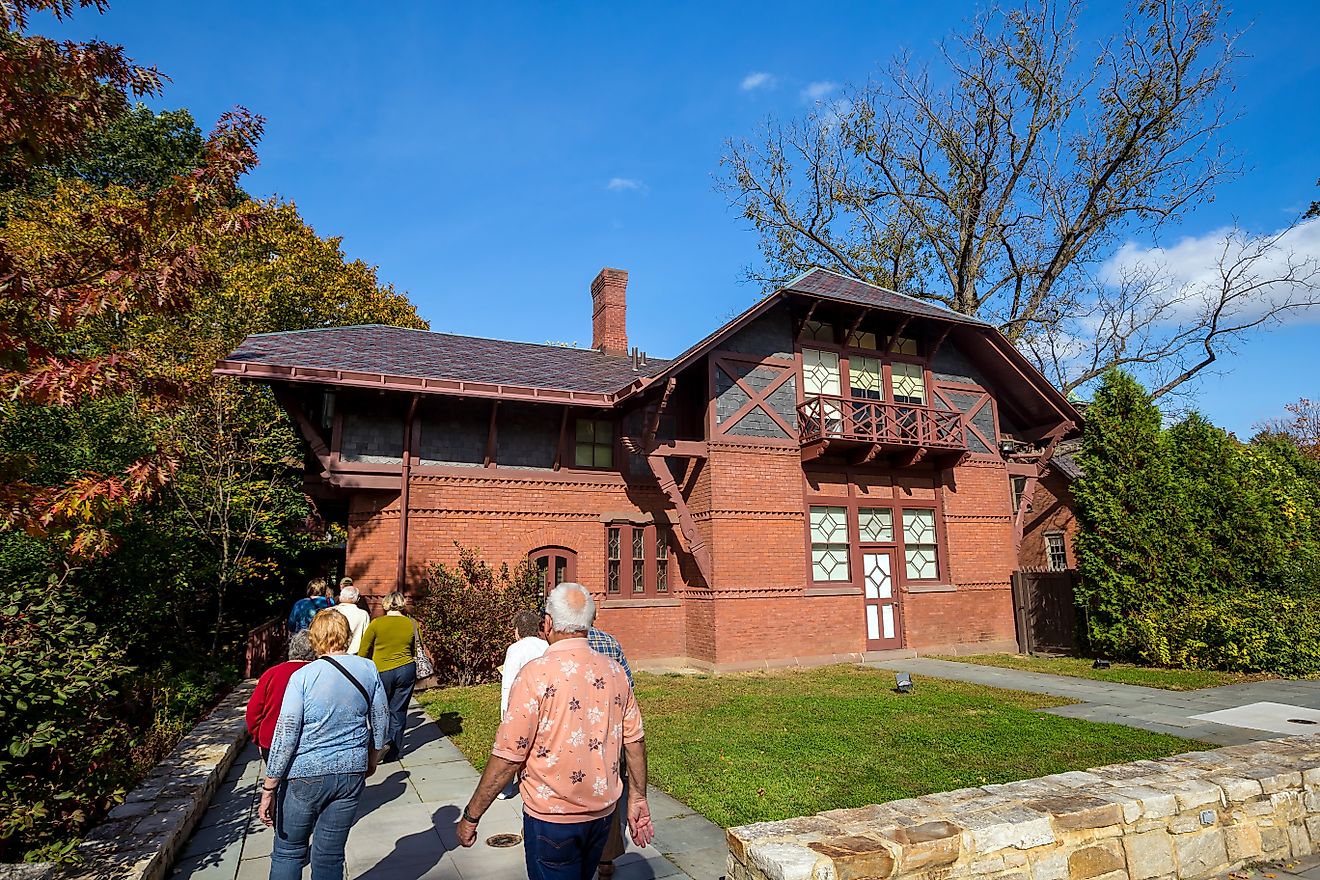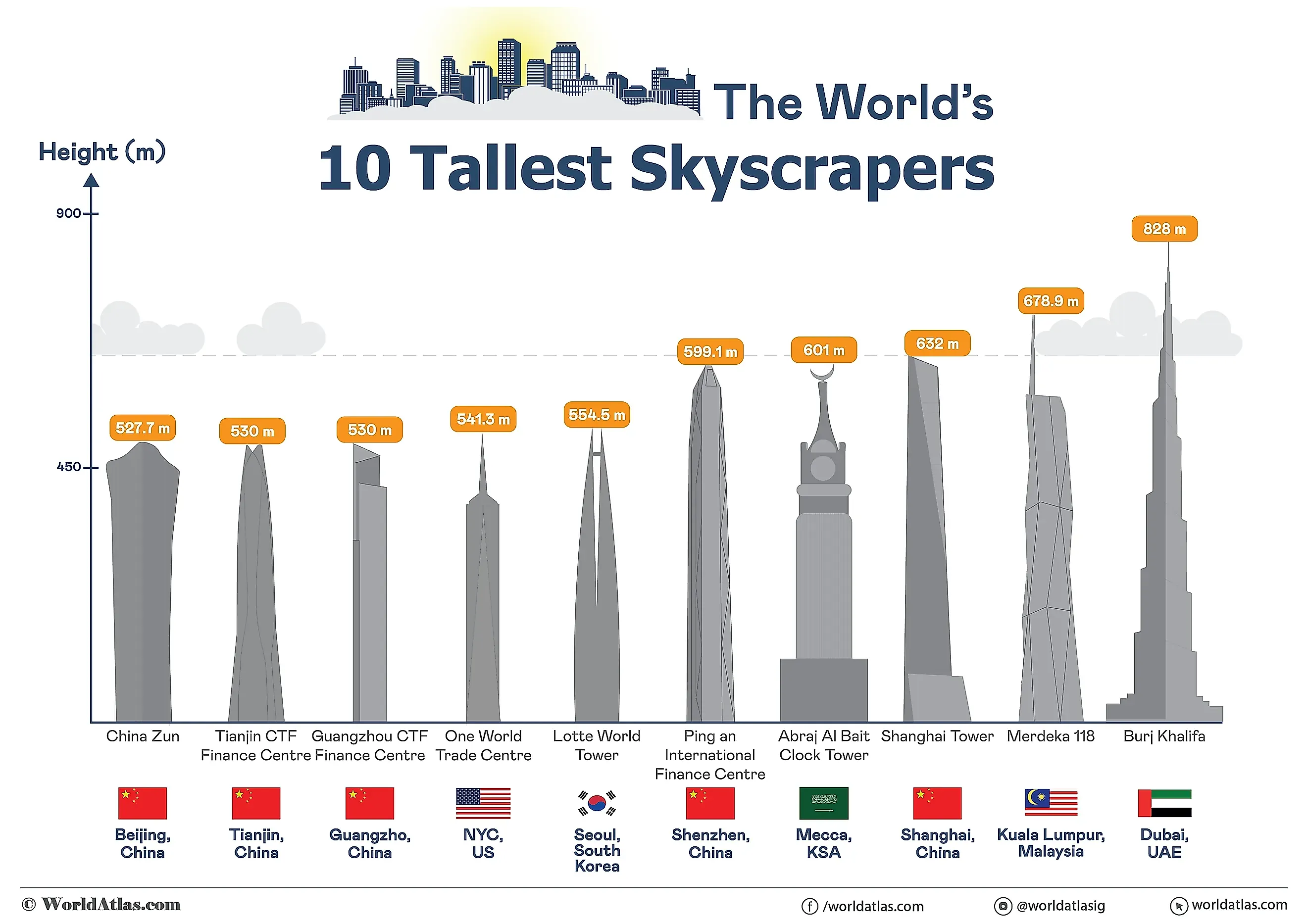
10 Tallest Buildings In The World
The heights of human genius and ingenuity can be seen all around but perhaps there is nowhere where this is more evident than in the magnificent buildings we have been able to erect. The tallest building in the world, the Burj Khalifa in the UAE, stands at a jaw-dropping 828m. The second largest is Merdeka 118 678.9m in Kuala Lumpur and in third is the Shanghai Tower 632.
The Tallest Buildings In The World
| Rank | Building Name | Height |
|---|---|---|
| 1 | Burj Khalifa, UAE | 828m (2,717ft) |
| 2 | Merdeka 118, Malaysia | 678.9m (2,227ft) |
| 3 | Shanghai Tower, China | 632m (2,073ft) |
| 4 | Abraj Al-Bait Clock Tower, Saudi Arabia | 601m (1,972ft) |
| 5 | Ping An International Finance Centre, China | 599.1m (1,966ft) |
| 6 | Lotte World Tower, South Korea | 554.5m (1,819ft) |
| 7 | One World Trade Center, United States | 541.3m (1,776ft) |
| 8 | Guangzhou CTF Finance Centre, China | 530m (1,739ft) |
| 9 | Tianjin CTF Finance Centre, China | 530m (1,739ft) |
| 10 | China Zun, China | 527.7m (1,731ft) |
1. Burj Khalifa, 828m

The Burj Khalifa is the tallest building in the world standing at a gargantuan 828m (2,717ft) tall. Construction began in 2004 and was formally opened in early 2010, although work still needed to be done on the interior.
The UAE commissioned the Burj Khalifa in an attempt to turn Dubai into a world-class tourist destination and move away from an oil-dependent economy. So far the plan has been a resounding success. Today the Burj Khalifa is one of the most widely recognized skyscrapers in the world.
2. Merdeka 118, 678.9m
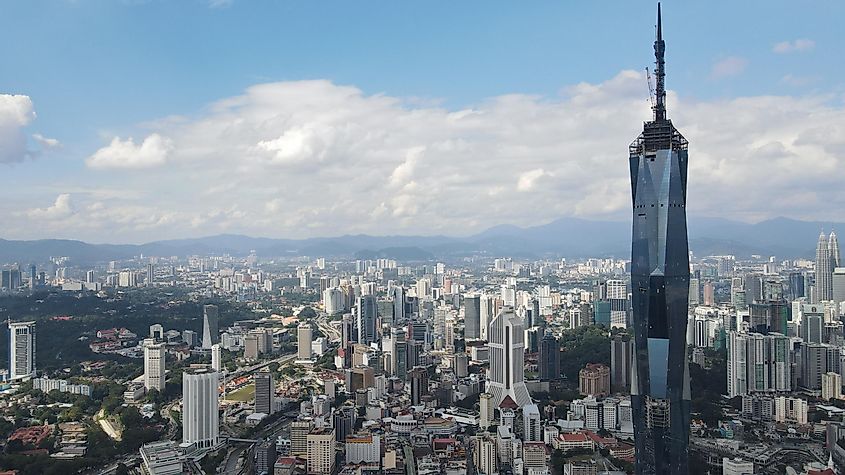
Located in the heart of Kuala Lumpur, the capital city of Malaysia, Merdeka 118 only officially opened early this year on January 10th. It has been under construction since 2016 and suffered many setbacks along the way.
Its name "Merdeka" means "independence" and is a monument to the independence of Malaysia. The number 118 is in reference to how many floors are in the building. Once the building's spire was completed it reached its final height of 678.9 m (2,227 ft).
3. Shanghai Tower, 632m
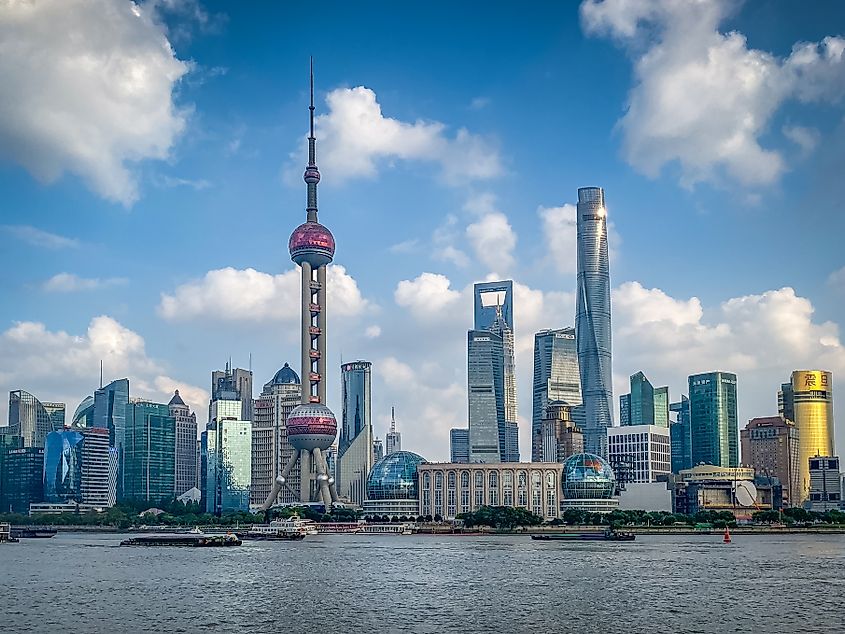
The plans for the Shanghai Tower go back as far as 1993. However, construction didn't start until 2008. This 128-story tower is the third tallest building in the world standing at an impressive 632-meter (2,073 ft) tall.
The Shanghai Tower officially finished construction in 2014 but was not open for public use until 2015. In order to climb the 128 floors in the building efficiently, the engineers equipped the tower with the second fastest elevator in the world reaching a top speed of 20.5 meters per second (74 km/h; 46 mph).
4. Abraj Al-Bait Clock Tower, 601m
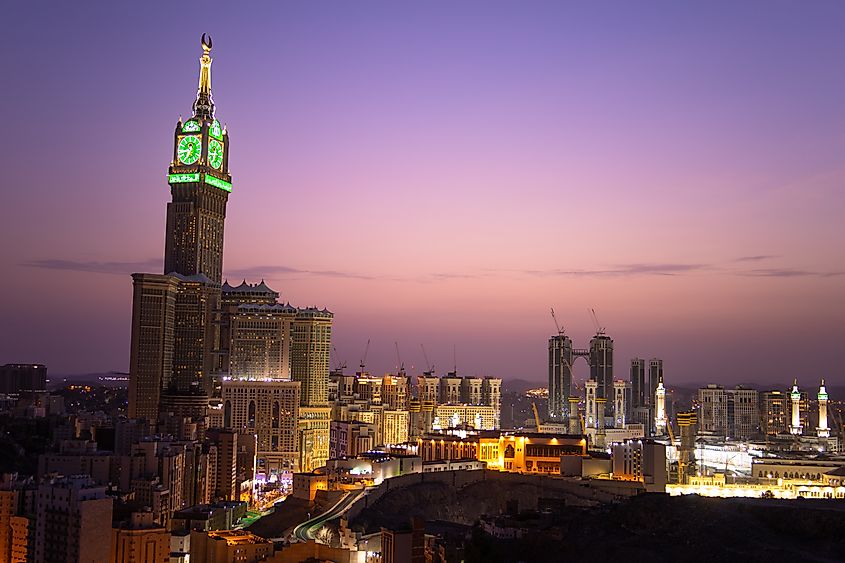
The Abraj Al-Bait Clock Tower is the crown jewel of a series of world-class hotels that look over the Kaaba in Mecca, the holiest site in Islam. Each year millions of Muslims go on Haj, a pilgrimage to Mecca and its religious wonders.
The Abraj Al-Bait Clock Tower contains a five-star hotel operated by Fairmont Hotels and a five-story shopping mall and grants a parking garage capable of holding over a thousand vehicles. It began construction in 2002 and was finally opened in 2012.
5. Ping An International Finance Centre, 599.1m
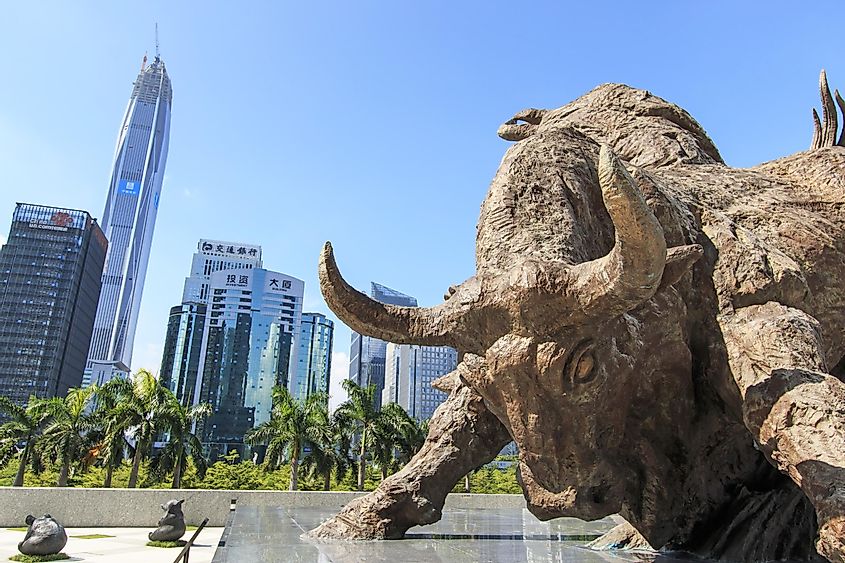
The Ping An International Finance Centre stands in the Futian District of Shenzhen with its 599.1m (1,966ft) and 116 floors, including its breathtaking observation deck. Its foundation stone was laid in mid-2009 and was finished in 2015.
This wonder was built with astonishing speed considering the sheer size and complexity of the tower. The Ping An has served China well in boosting its international reputation as a country that is rapidly modernizing and more than capable of financing and engineering such impressive feats.
6. Lotte World Tower, 554.5m
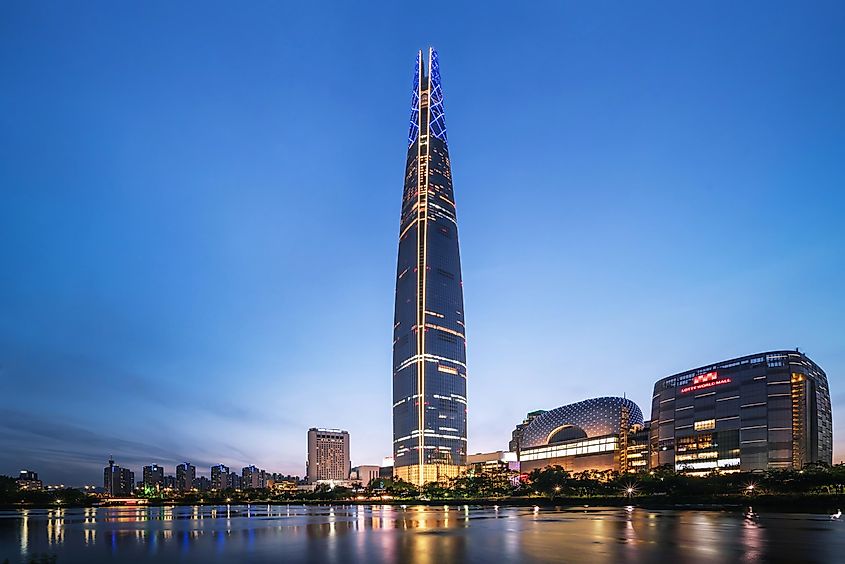
After 13 years of site preparation and planning, the Lotte World Tower gained final approval, and construction started in late 2010. Six years later, the tower was finalized and became South Korea's tallest building, standing at 554.5 meters (1,819ft).
The Lotte World Tower is now the most famous landmark in Seoul and is a symbol of the burgeoning economic might Korea has begun to harness in the last few decades. If trends continue, there is good reason to believe similarly impressive buildings will be joining the Lotte World Tower in the near future.
7. One World Trade Center, 541.3m
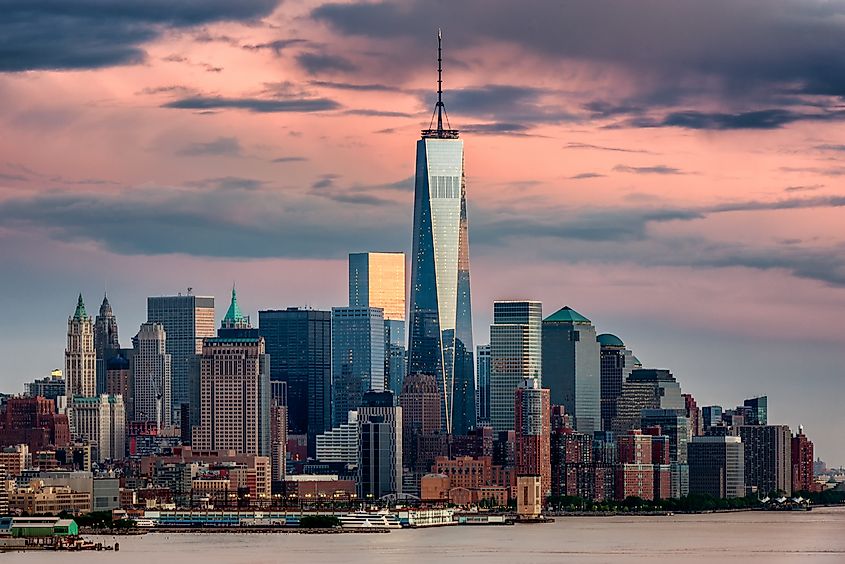
The One World Trade Center is part of a complex comprising several buildings at the south-western tip of Manhattan. The building's name is a somber reminder of the devasting attacks on the previous World Trade Centers that took place on September 11th, 2001.
Foundation work for the new building began on April 27, 2006, and construction crews completed the megastructure in 2013, making it the tallest building in the United States of America with its 541.3 meters (1,776ft). One World Trade Center officially opened in 2014.
8. Guangzhou CTF Finance Centre, 530m
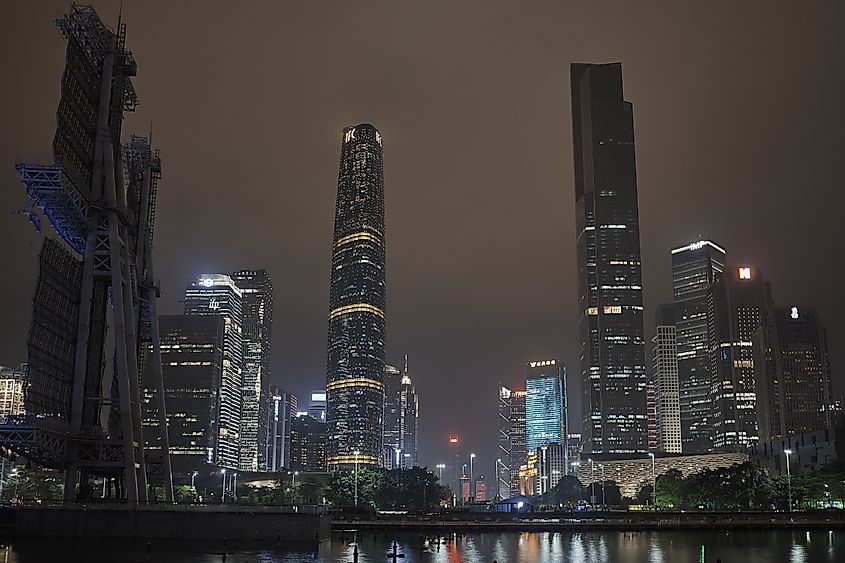
The Guangzhou CTF Finance Centre is the third-tallest in China with a height of 530 meters (1,739ft). The tower is much more than just an office building. It hosts houses, a shopping mall, offices, apartments, and even a hotel.
Its construction started in mid-2010 and was completed in late 2016, including an eight-floor podium connected to the skyscraper offering outstanding views of the Guangzhou city center. There is also a second smaller tower attached that measures in at 439 m (1,439 ft) tall.
9. Tianjin CTF Finance Centre, 530m
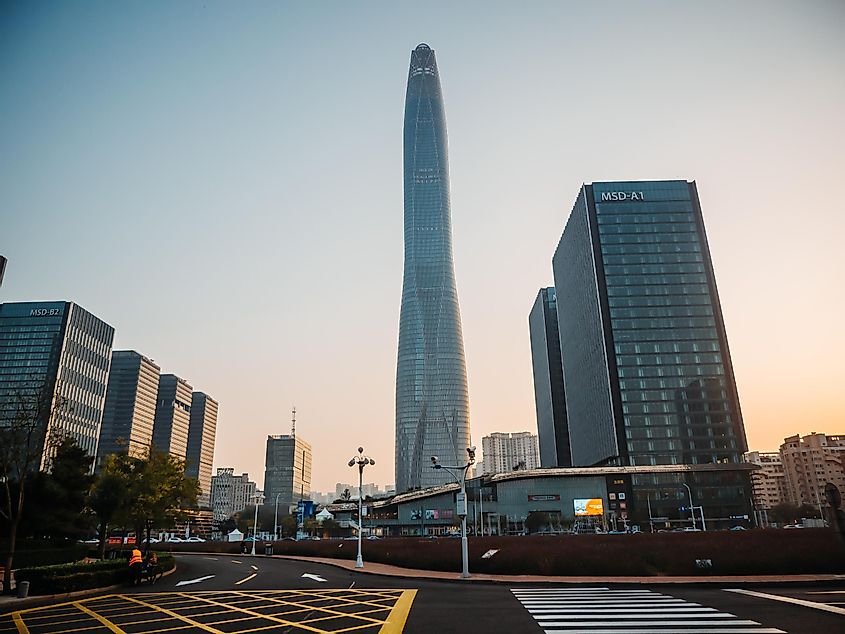
The Tianjin CTF Finance Centre is just another entry in a long list of massive skyscrapers that have been built in China this century. Coming in at 530m (1,739ft), its build design is just as impressive as its height.
The softly curved glass skin of the Tianjin CTF Finance Centre integrates eight sloping mega-columns that increase the structure's response to seismic concerns. This award-winning skyscraper contains office spaces, 300 luxury serviced apartments, and a five-star 350-room hotel. It was completed in 2019.
10. China Zun, 527.7m
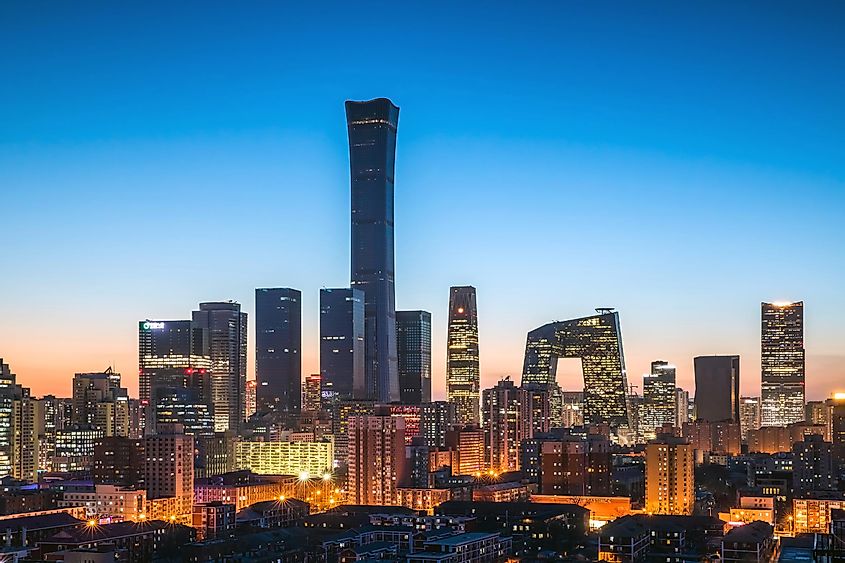
Also known as CITIC Tower, the China Zun is the tallest building in Beijing for the foreseeable future, as in 2018, authorities capped new buildings in the central business district.
The building's unique slender appearance comes from the zun, an ancient Chinese wine vessel that inspired the building's design. This behemoth was planned and completed in a blistering 6 years between 2012 and 2018.
Final Thoughts
As technology improves, it is only a matter of time before newer and larger buildings are constructed. Even the Burj Khalifa might not be safe in its number one spot. There is currently talk that the Jeddah Tower, also known as the Kingdom Tower being built in Saudi Arabia could reach a staggering 1,000m (3,281 ft) in height.
